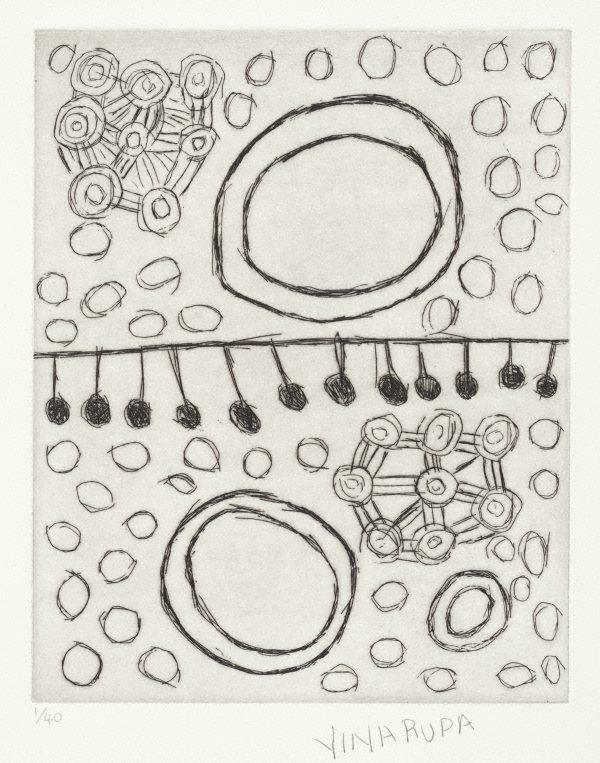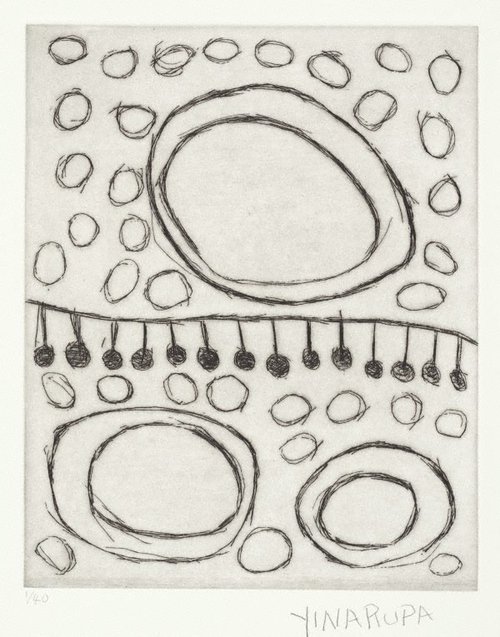Title
Mukula, from the suite Tjukurrpa Palurukutu, Kutjupawana Palyantjanya - same stories, a new way
2009
Artist
-
Details
- Place where the work was made
-
Papunya
→
Northern Territory
→
Australia
- Cultural origin
- Pintupi, Western Desert region
- Date
- 2009
- Media category
- Materials used
- etching on Hahnemühle rag paper
- Edition
- 1/40
- Dimensions
- 33.0 x 25.0 cm platemark; 55.0 x 45.0 cm sheet
- Signature & date
Signed l.r. beneath platemark, pencil "YINARUPAi". Not dated.
- Credit
- Purchased with funds provided by the Aboriginal Art Collection Benefactors 2011
- Location
- Not on display
- Accession number
- 421.2011.29
- Copyright
- © Yinarupa Nangala. Licensed by Aboriginal Artists Agency Ltd
- Artist information
-
Yinarupa Nangala
Works in the collection
- Share
-
-
About
In addition to showcasing the quality of Papunya Tula Artists as a whole, this suite of etchings emphasises the strength of each individual artist as they successfully translate their Tjukurrpa to the new medium of printmaking. Far from being a mere copy of their paintings in a different scale and medium each artists adapts their visual language to this new process with apparent ease, resulting in bold, confident works that are extraordinary in themselves, and when combined as a suite, are truly amazing.
The art centre documentation for this work states:
This etching depicts designs associated with the rockhole site of Mukula, east of Jupiter Well in Western Australia. During ancestral times a large group of women came from the west and stopped at this site to perform the ceremonies associated with the area. The women later continued their travels towards the east, passing through Ngaminya, Kiwirrkura and Wirrulnga on their way to Wilkinkarra (Lake Mackay). As the women travelled they gathered a variety of bush foods including kampurarrpa berries (desert raisins) from the small shrub Solanum centrale, and pura (bush tomato) from the plant Solanum chippendalei. Kampurarrpa berries can be eaten directly from the plant but are sometimes ground into a paste and cooked on the coals as a type of damper, while pura is roughly the size of an apricot, and after the seeds have been removed, can be stored for long periods by halving the fruit and skewering them onto a stick. The shapes in the etching represent the features of the country through which they travelled as well
-
Places
Where the work was made
Papunya
-
Exhibition history
Shown in 1 exhibition
Papunya Tula works on paper, Art Gallery of New South Wales, Sydney, 13 Dec 2012–24 Mar 2013

